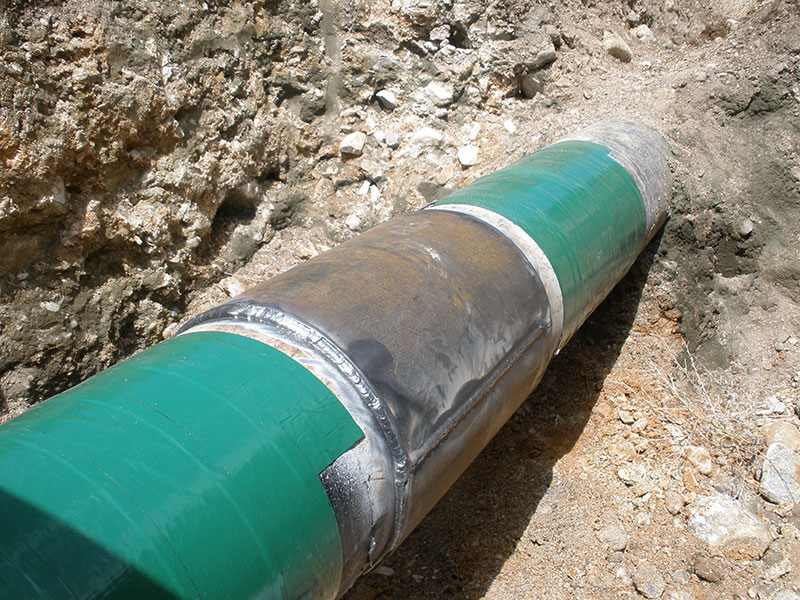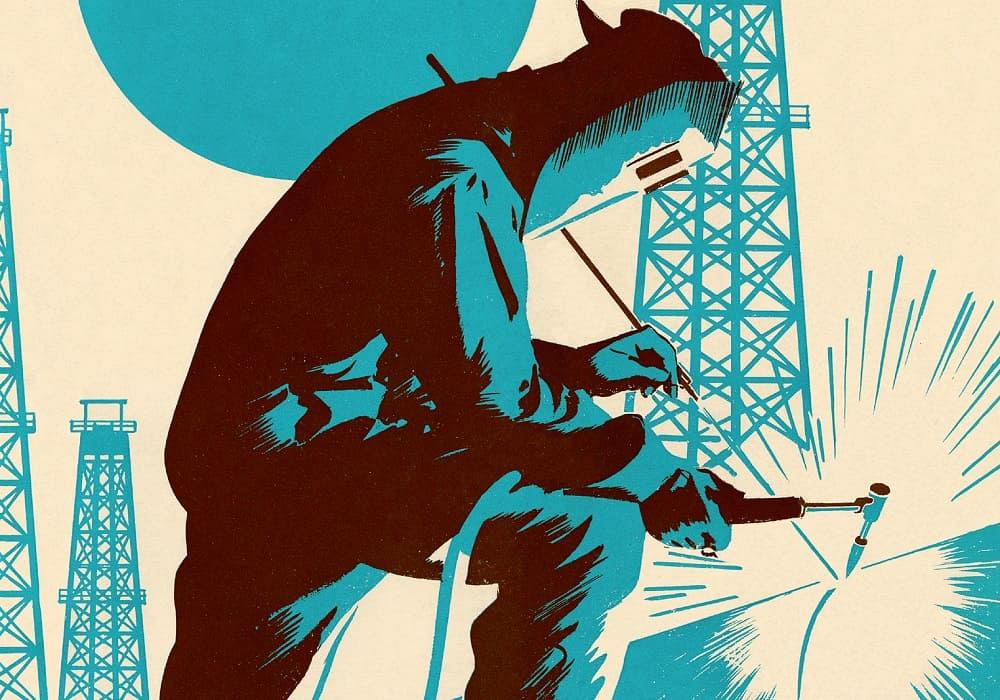Pipeline Welding Inspection: Crucial Actions for Reliable Pipeline Building And Construction
Wiki Article

Finest Practices for Pipeline Welding Assessment: Techniques, Requirements, and Procedures to Attain Quality Control and Compliance
Reliable pipeline welding examination is vital for ensuring the stability and safety of crucial facilities. By using a combination of methods such as aesthetic examination and advanced non-destructive testing techniques, in addition to adherence to established market criteria like those from ASME and AWS, organizations can substantially boost their quality control procedures. However, the application of these ideal practices positions numerous challenges that warrant careful factor to consider. Recognizing the intricacies associated with each stage of examination is vital to achieving compliance and reliability in pipeline systems. What certain techniques can be used to navigate these obstacles successfully?Relevance of Welding Examination
The honesty of welded joints is critical in guaranteeing the safety and integrity of pipe systems. Appropriate welding techniques and comprehensive inspection procedures are important to stop failures that can lead to catastrophic cases, ecological damage, and death. Pipeline Welding Inspection. Welding assessment functions as a preventive action, determining defects such as splits, porosity, and incomplete fusion prior to they intensify right into severe issuesIn addition, pipeline systems often run under high pressure and severe conditions, making the top quality of welds a lot more vital. Regulative conformity is one more substantial element, as numerous requirements dictate the quality control procedures that should be stuck to in pipeline building and construction and maintenance. Failing to abide can lead to lawful ramifications and monetary losses.

The duty of welding inspection prolongs past mere confirmation of handiwork; it encompasses the guarantee of long-term functional stability. This includes an organized approach that includes not just aesthetic inspections however likewise progressed non-destructive screening methods. Eventually, efficient welding examination is a financial investment in the longevity and security of pipeline systems, guaranteeing they operate as planned while minimizing risks connected with product shortages.
Trick Examination Strategies

Visual examination, typically the initial line of defense, permits the identification of surface issues such as fractures, damages, and porosity. Ultrasonic testing employs high-frequency acoustic waves to spot interior flaws, providing a thorough evaluation of weld honesty. This non-destructive method is particularly reliable for recognizing gaps that might not show up on the surface.
Radiographic screening entails using X-rays or gamma rays to produce pictures of the bonded joint, disclosing internal problems. This method gives thorough understandings but may need customized tools and safety considerations. Finally, magnetic bit screening is efficient for spotting surface and near-surface interruptions in ferromagnetic products, making use of magnetic areas and fine iron particles.
Industry Criteria and Regulations
Conformity with sector requirements and guidelines is crucial for guaranteeing the quality and safety and security of pipeline welding examinations. These standards supply a structure for best methods in welding processes, materials, and evaluation strategies, enabling companies to reduce problems and enhance the honesty of pipeline systems. Key bodies such as the American Culture of Mechanical Engineers (ASME), the American Welding Culture (AWS), and the International Company for Standardization (ISO) set forth standards that are commonly recognized and embraced within the industry.
In the USA, policies from the Pipeline and Hazardous Products Safety Management (PHMSA) regulate the safety and security of pipe operations, mandating extensive inspection methods. These standards not just serve to shield public security and the setting however additionally guarantee conformity with legal and legal obligations. Adherence to the appropriate codes, such as ASME B31.3 for procedure piping, is vital for maintaining operational performance and regulatory conformity.
Furthermore, constant updates and alterations to these standards show technical developments and advancing industry methods, stressing the need for organizations to remain enlightened and train personnel appropriately. Inevitably, robust compliance with well established criteria fosters depend on and integrity in pipe infrastructure, protecting both stakeholders and properties.
Effective Evaluation Treatments
Reliable examination procedures are important for determining possible issues in pipe welds and ensuring the overall stability of the system. A methodical technique to examination incorporates numerous key phases, including pre-weld, in-process, and post-weld evaluations. Each phase plays a crucial function in keeping quality control.Throughout pre-weld assessment, it is necessary to evaluate the products and joint configurations, ensuring compliance with project specifications. In-process inspections involve keeping track of welding techniques and parameters, such as heat input and take a trip speed, to avoid defects from taking place. This phase permits real-time modifications to welding techniques.
Post-weld inspections include non-destructive screening (NDT) strategies like radiography, ultrasonic screening, and magnetic fragment screening. These methods help detect internal and surface area problems that could compromise the pipe's performance. Documentation of all inspection tasks is vital, offering a deducible document that supports conformity with market requirements.
Training and qualification of assessment personnel better improve the effectiveness of these treatments. By adhering to an organized assessment protocol, companies can reduce threats, guarantee conformity, and eventually deliver pipelines that fulfill rigid safety and efficiency look these up requirements.
Typical Challenges and Solutions
Pipe welding inspection provides numerous typical obstacles that can affect the top quality and safety of the end product. One considerable obstacle is the variability in welding methods and products, which can result in irregular weld quality. To address click reference this, it is critical to establish standard treatments and training for welders, guaranteeing a consistent approach across tasks.
Ecological aspects, including temperature level and humidity, can also impact the welding process, possibly resulting in cracks or insufficient fusion. Applying controlled settings and adhering to pre-weld treatments can reduce these risks.
Verdict
To conclude, the implementation of ideal practices for pipe welding evaluation is crucial for guaranteeing quality assurance and conformity with sector standards. A comprehensive technique, including different methods such as visual, ultrasonic, Related Site and radiographic screening, helps with the identification of problems throughout all stages of the welding process. Pipeline Welding Inspection. Adherence to developed guidelines and efficient examination treatments not just enhances the dependability and safety of pipeline systems but likewise alleviates threats related to welding issues, thus advertising general operational stabilityConformity with sector standards and policies is crucial for ensuring the quality and security of pipe welding examinations. These criteria provide a framework for finest methods in welding procedures, products, and examination strategies, allowing organizations to minimize problems and improve the stability of pipeline systems.In the United States, guidelines from the Pipe and Hazardous Materials Security Management (PHMSA) regulate the security of pipeline operations, mandating extensive evaluation procedures. A methodical method to evaluation includes several crucial stages, consisting of pre-weld, in-process, and post-weld assessments.In final thought, the application of best practices for pipeline welding examination is crucial for making certain top quality guarantee and compliance with industry standards.
Report this wiki page